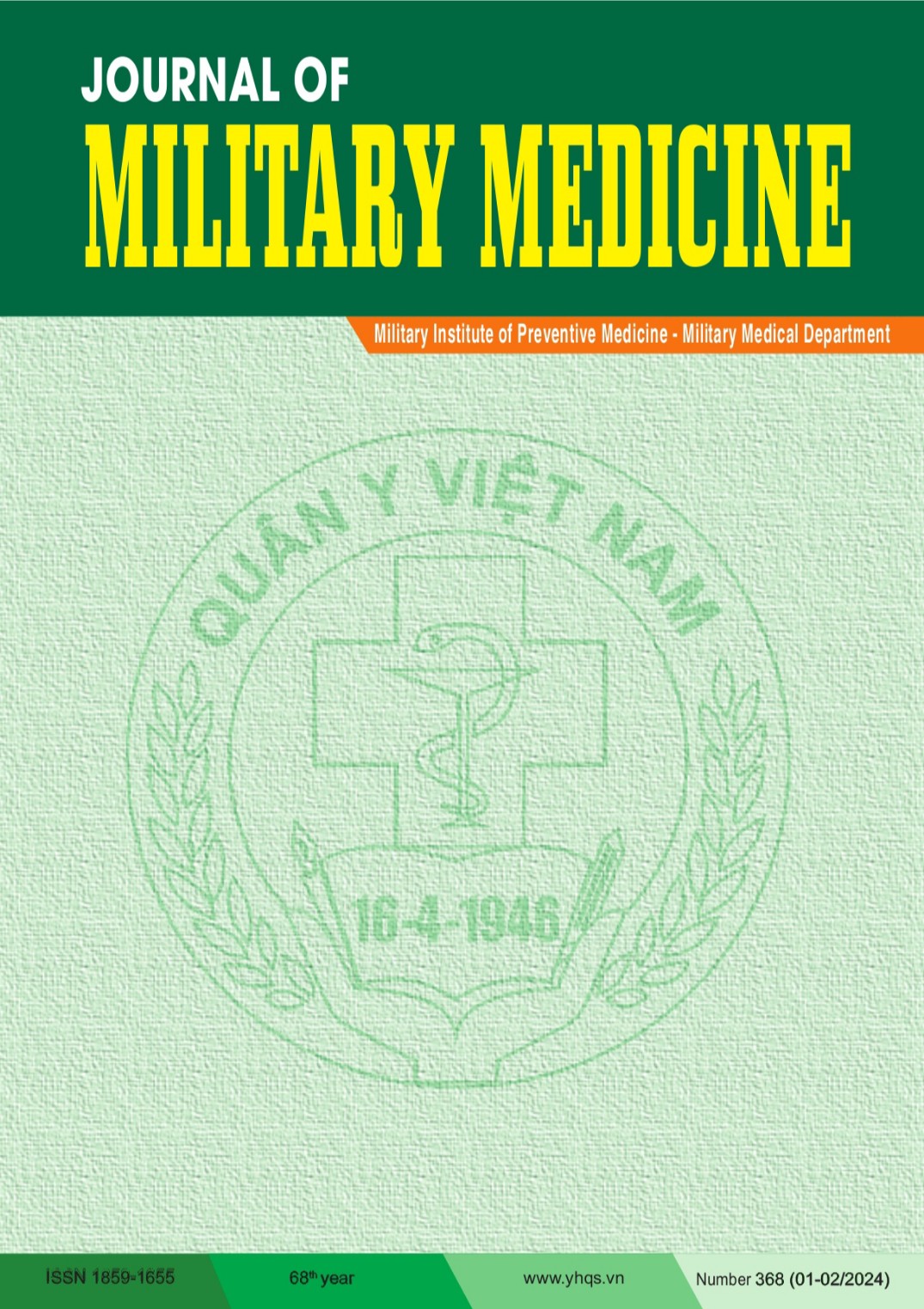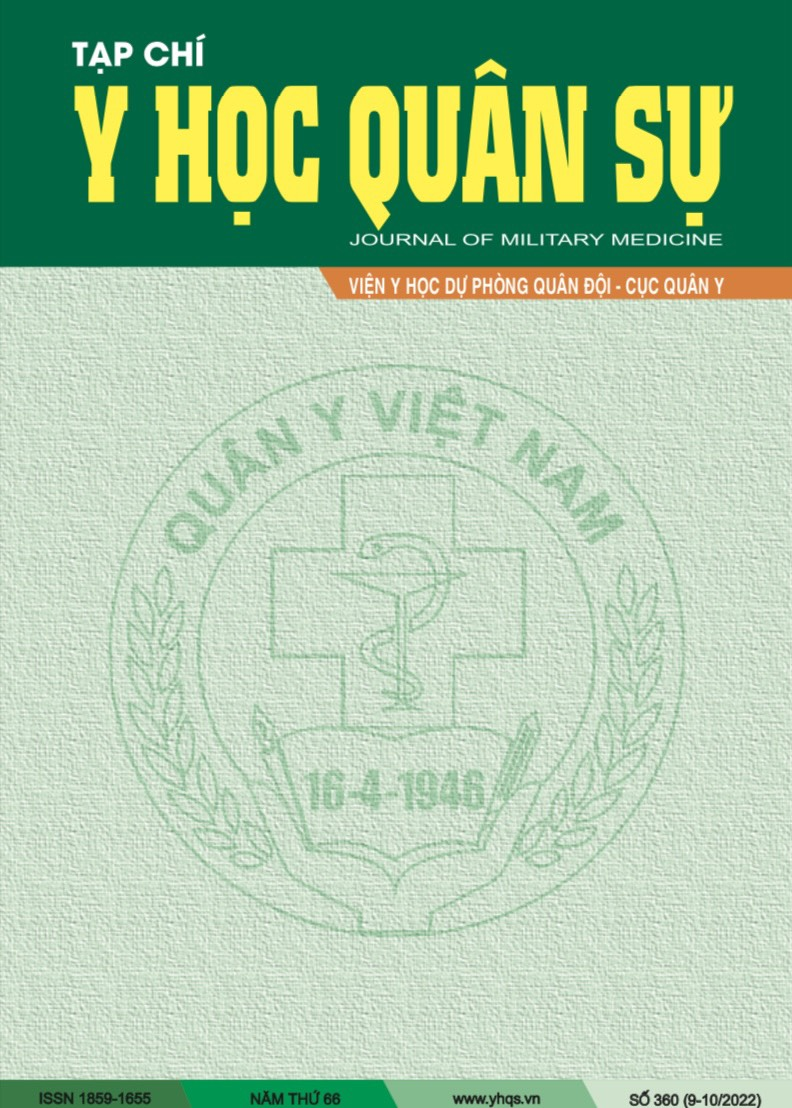STUDY ON THE ANTAGONISTIC ACTIVITY AGAINST TWO PATHOGENIC BACTERIA IN HUMANS OF STREPTOMYCES MIP_L26 ISOLATED FROM SOIL IN THE ROOT ZONE OF THE MAY CHANG TREE (LITSEA CUBEB)
DOI:
https://doi.org/10.59459/1859-1655/JMM.377Từ khóa:
Streptomyces MIP_L26, May Chang tree (Litsea cubeba), antagonistic activity, 16S rRNATóm tắt
Purpose: Study on the antagonistic activity against two pathogenic bacteria in humans (Staphylococcus aureus and Streptococcus pneumoniae) of the Streptomyces MIP_L26 (Called MIP_L26), isolated from the soil in the root zone of the May Chang tree; to investigate the biological characteristics of MIP_L26
Subjects and methods: Experimental study, determine the antimicrobial activity against two pathogenic bacteria in humans (Staphylococcus aureus and Streptococcus pneumoniae), and some biological characteristics of MIP_L26.
Results: MIP_L26 was identified as having a strong antagonistic ability against the two bacteria causing Staphylococcus aureus and Streptococcus pneumoniae with an antibacterial ring diameter of 18 ± 5 mm and 13 ± 5 mm, respectively. Based on classification according to morphological, physiological, and biochemical characteristics, combined with the results of 16S rRNA gene sequencing, MIP_L26 was identified as Streptomyces gancidicus MIP_L26. The fermentation medium for the biosynthesis of antibacterial substances was ISP6 and the recovery time for antimicrobial substances was after 72 hours of fermentation.
Tài liệu tham khảo
IA. Volynkian et al (2022), “Mechanism-Based Approach to New Antibiotic Producers Screening among Actinomycetes in the Course of the Citizen Science Project”, Antibiotics (Basel), 11 (9): 1.198.
Mohanraj G. et al, (2013), “Isolation and screening of actinomycetes from marine sediments for their potential to produce antimicrobials”, Actinomycetes.
Fei Peng et al (2020), “Insights into Streptomyces spp. isolated from the rhizospheric soil of Panax notoginseng: isolation, antimicrobial activity and biosynthetic potential for polyketides and non-ribosomal peptides”, Microbiol, 20: 143.
L. Dow et al (2023), “Streptomyces and their specialised metabolites for phytopathogen control – comparative in vitro and in planta metabolic approaches”, Plant Pathogen Interactions. 14.
Jan Hudzicki (2009), Kirby-Bauer Disk Diffusion Susceptibility Test Protocol, American Society for Microbiology
Nguyen Lan Dung (translate, 1983). Practice in microbiology, Science and Technology Publishing House, Hanoi, p. 73-817.
Tresner H. D, Bergey E.J (1963), “System of Color Wheels for Streptomycete Taxonomy”, Appl. Microbiol, 11: 8.
Nguyen Van Cach (2004), Fermentation technology of antibiotics, Science and Technology Publishing House, Hanoi.
K. Tamura, G. Stecher, D. Peterson, A. Filipski, S. Kumar (2013), “MEGA6: molecular evolutionary genetics analysis version 6.0”, Molecular Biology and Evolution, 30 (12), 2.725-2.729.
Chang et al. (2021), “An Actinobacterial Isolate, Streptomyces sp. YX44, Produces Broad-Spectrum Antibiotics That Strongly Inhibit Staphylococcus aureus”, Microorganism, 9 (3), 630.
Sharma et al, (2029), “Purification and characterization of actinomycins from Streptomyces strain M7 active against methicillin resistant Staphylococcus aureus and vancomycin resistant Enterococcus”, Microbiology, 19, 44.
Bandar Ali Alghamdi et al, (2023), “Antimicrobial resistance in methicillin-resistant staphylococcus aureus”, Saudi J Biol Sci., 30 (4), 103604.
Silvia Katrine Silva Escher et al, (2016), “Influence of glucose and stirring in the fermentation process in order to produce anti-Candida metabolites produced by Streptomyces sp.”, Braz. J. Pharm. Sci., 52 (2).
Schmidt et al, (2005), “Optimization and scale up of industrial fermentation processes”, Applied Microbiology and Biotechnology, 68 (4): 425-35.
LinDa et al, (2017), “Optimization production conditions of antibacterial metabolite from Streptomyces sp.”, Asian J Pharm Clin Res, 10, Issue 9, 386-391.
Firew Elias (2022), “Improved Antibiotic Activity from Streptomyces monomycini strain RVE129 Using Classical and Statistical Design of Experiments”, Research Square, 52.
Tamura, G. Stecher, D. Peterson, A. Filipski, S. Kumar (2013), “MEGA6: molecular evolutionary genetics analysis version 6.0”, Molecular Biology and Evolution, 30(12), 2725-2729.
Nayaka et al, (2020), “Molecular Characterization and Antimicrobial Efficacy of Streptomyces gancidicus Strain SN-3 from Soil Samples”, Microbiology.
Bhakyashree et al, (2020), “Actinomycetes mediated targeting of drug resistant MRSA pathogens”, Journal of King Saud University - Science, 260-264.
Tải xuống
Đã Xuất bản
Cách trích dẫn
Số
Chuyên mục
Chấp nhận đăng 13-12-2023
Ngày xuất bản 28-02-2024



